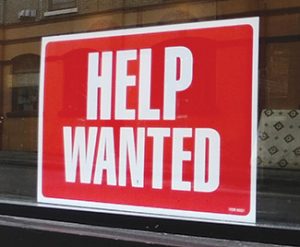Did COVID-19 cause the worker shortage?
NEWS ANALYSIS
 By DOUG SWANSON
By DOUG SWANSON
Did the COVID-19 pandemic cause the worker shortage?
The short answer is, no, though it is a contributing factor. According to the U.S. Bureau of Labor Statistics, the national unemployment rate dropped below four percent in July of 2018 and continued to drop until May 2020. The worker shortage was established, and growing, well before the start of COVID-19.
There are several factors causing the worker shortage.
 BOOMERS ARE RETIRING
BOOMERS ARE RETIRING
A study published by the Pew Research Center found that one in four of all workers on Jan. 1, 2010, will become retirement eligible and leave the workforce by Dec. 31, 2029.
This means that 79,000,000 baby boomers will be leaving the workforce over the next 20 years. At this point, we are halfway through this mass exodus.
MISSING WORKERS
Princeton University and the National Bureau of Economic Research report that the rise in addiction, due in part to opioids, has contributed to the decline in the U.S. Labor Participation rate.
Another decline in worker participation is due to an increase in the U.S. incarceration rates, which rose from 220 (per 100,000) in 1980 to 756 (per 100,000) in 2008, even though crime rates fell by 30 percent between 1991 and 2001.
Combined, these two trends mean fewer workers, and growing demand for workers in the incarceration and recovery, healthcare, and wellness industries.
DECLINING BIRTH RATES
Economic stresses and the costs of raising children have contributed to a declining birth rate.
The U.S. “total fertility rate,” defined as the estimated lifetime fertility of all U.S. women ages 15 to 44, dropped to 1.73 in 2018. The U.S. has not seen a replacement fertility rate of 2.1, since 1971. Last year the U.S. general birth rate fell another four percent.
SHORTAGE NOT GOING AWAY
There is not a single reason that it is hard to find workers.
Another example is early retirement plans that replaced an aging workforce with younger, lower-cost workers, which have increased the decline in the supply of workers over the past 50 years.
Undoubtedly, the worker shortage began before COVID-19, and it certainly has made employers more aware of the issue. Let us not be quick to blame the current shortage of workers on COVID-19, and instead focus on the fact that the era of a surplus of workers is over and that the shortage is not going away when unemployment benefits are terminated.
(Doug Swanson is in the Labor and Workforce Development field with MU Extension and coordinator of the Labor Studies program at the University of Missouri-St. Louis.)



Leave a Reply